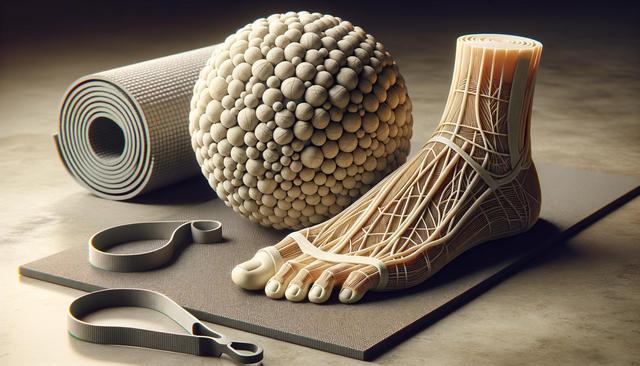Supporting Foot Health: Effective Exercises for Neuropathy Relief
Foot neuropathy can be challenging, but incorporating proper exercises into your routine may help improve mobility and reduce discomfort.

Understanding Foot Neuropathy and Its Impact
Foot neuropathy, often associated with conditions like diabetes, results from nerve damage that affects sensation in the feet. Symptoms may include tingling, numbness, pain, or a burning sensation. These challenges can interfere with balance, walking, and overall quality of life. While medical treatments are important, physical activity plays a complementary role in managing symptoms. Exercise helps improve circulation, strengthen muscles, and promote nerve health, which can ease discomfort and support daily mobility.
The goal of exercise for neuropathy is not just to improve physical function but also to reduce the risk of further complications such as foot ulcers or falls. When done safely and consistently, foot-focused movements can contribute to better nerve communication and overall foot wellness. Before beginning any exercise program, it’s essential to consult a healthcare provider to ensure the activities are appropriate for your condition.
Simple Stretching to Improve Flexibility
Stretching plays a vital role in keeping foot muscles and tendons flexible. This is particularly important for people with neuropathy who may experience stiffness or muscle weakness. Basic stretches can increase your range of motion and reduce the risk of injury. Consider the following gentle stretches as part of your daily routine:
- Toe Stretch: Sit in a chair and gently pull your toes back toward your shin with your hand. Hold for 15-30 seconds on each foot.
- Calf Stretch: Stand facing a wall, place one foot behind the other, and lean forward to stretch your back leg’s calf muscle.
- Plantar Fascia Stretch: Roll the arch of your foot over a tennis ball or frozen water bottle to massage and stretch the sole.
These stretches can be done once or twice a day and require minimal equipment or space. The key is consistency and avoiding overstretching, which could lead to strain or injury.
Strengthening Exercises for Better Support
Strengthening the muscles in your feet and lower legs can provide better support and stability. This is especially important for individuals with neuropathy who might be more prone to falls or instability. Simple strengthening exercises can be performed at home without the need for specialized equipment. Here are a few examples:
- Toe Curls: Place a towel on the floor and use your toes to scrunch it toward you. This helps strengthen the muscles in your feet.
- Heel Raises: Stand near a wall or chair for support and slowly raise your heels off the ground, holding the position for a few seconds before lowering.
- Ankle Circles: While seated or lying down, lift one foot and rotate your ankle in slow circles in both directions to improve mobility and strength.
Performing these exercises regularly can help build endurance and improve your ability to walk more comfortably. Start with a few repetitions and gradually increase as your strength improves.
Balance and Coordination Training
Maintaining balance is essential, particularly for individuals with foot neuropathy who may experience a loss of sensation. Balance exercises can help prevent falls and enhance your confidence during daily activities. These exercises focus on coordination, stability, and control:
- Single-Leg Stands: Stand on one foot for 10-15 seconds while holding onto a stable surface, such as a countertop. Switch legs and repeat.
- Heel-to-Toe Walk: Walk in a straight line, placing the heel of one foot directly in front of the toes of the other with each step.
- Side Leg Lifts: Stand upright and slowly lift one leg to the side while keeping your body straight. Lower and repeat on the other side.
Practicing balance exercises several times a week can help you maintain independence and reduce the fear of falling. As always, use support if needed and avoid any movements that feel unsafe.
Incorporating Low-Impact Activities
In addition to targeted exercises, engaging in low-impact aerobic activities can further support nerve health and general well-being. Activities that are gentle on the joints and feet can enhance circulation, improve mood, and help manage weight—factors that can influence neuropathy symptoms. Some suitable options include:
- Walking: A short, daily walk can stimulate circulation in your feet and legs. Use supportive footwear and walk on even surfaces.
- Swimming: Water provides resistance without putting stress on your joints, making it an excellent choice for full-body conditioning.
- Stationary Cycling: A stationary bike can help improve cardiovascular fitness and leg strength without putting pressure on the feet.
Start with short sessions and gradually increase your time as your stamina builds. Listening to your body and taking breaks when needed is important to avoid overexertion.
Conclusion: Making Exercise a Sustainable Part of Neuropathy Care
Exercise is a valuable tool in managing foot neuropathy, offering benefits such as improved circulation, enhanced muscle strength, and better balance. By incorporating stretching, strengthening, balance, and aerobic activities into your weekly routine, you can support your feet and reduce the impact of neuropathy symptoms. Remember to start slowly, use proper form, and consult a medical professional if you have any concerns. Staying active with safe and purposeful movements can make a meaningful difference in your comfort and mobility over time.